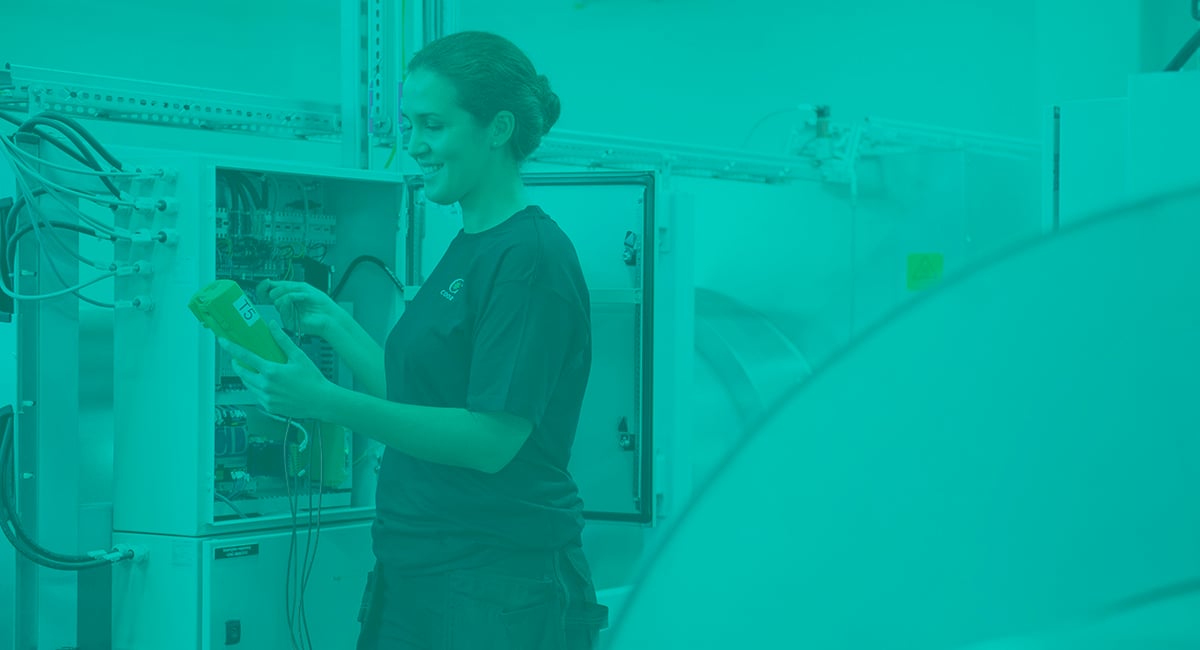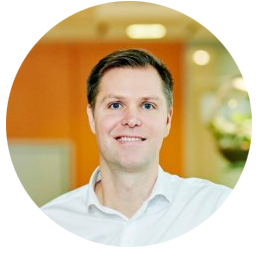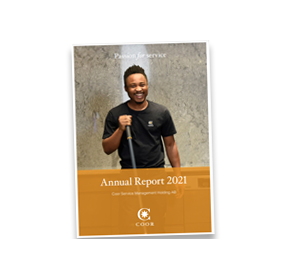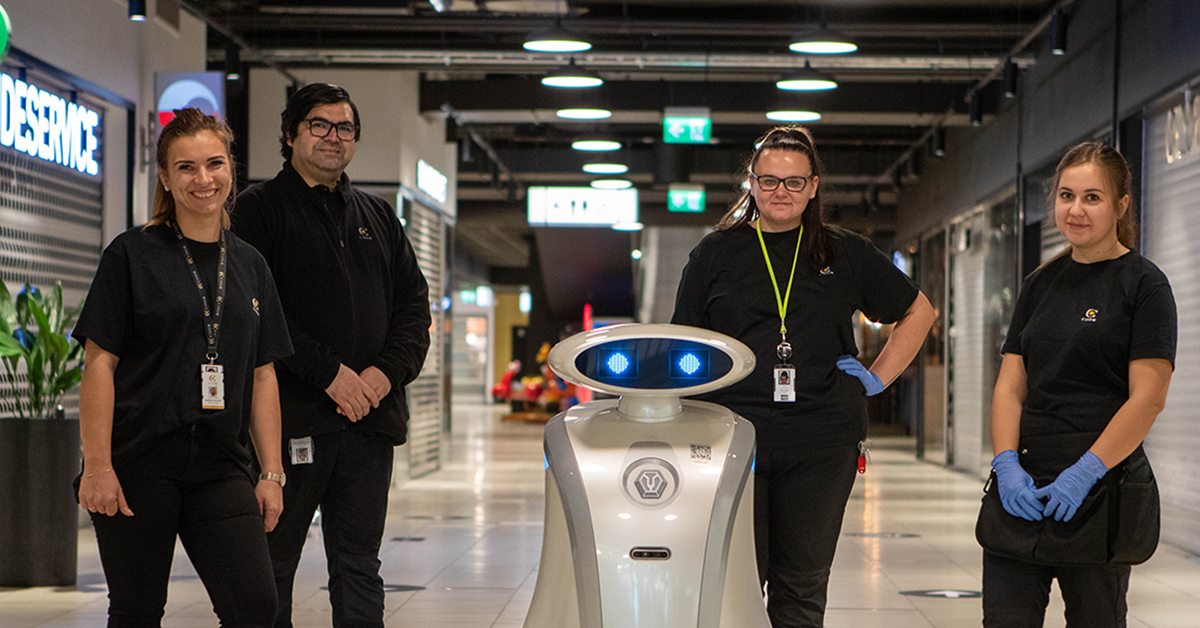Technology enables smarter property service deliveries
Consider the opportunity to have a digital twin of your facility to identify and act on a potential breakdown before it actually breaks. Furthermore, if an issue arise it can be solved not only using the local competence available but supported by relevant experts interacting through augmented reality techniques. New technology also enables new ways to operate our properties, and we need it! 40% of energy and process related CO2 emissions are accounted for by Properties.
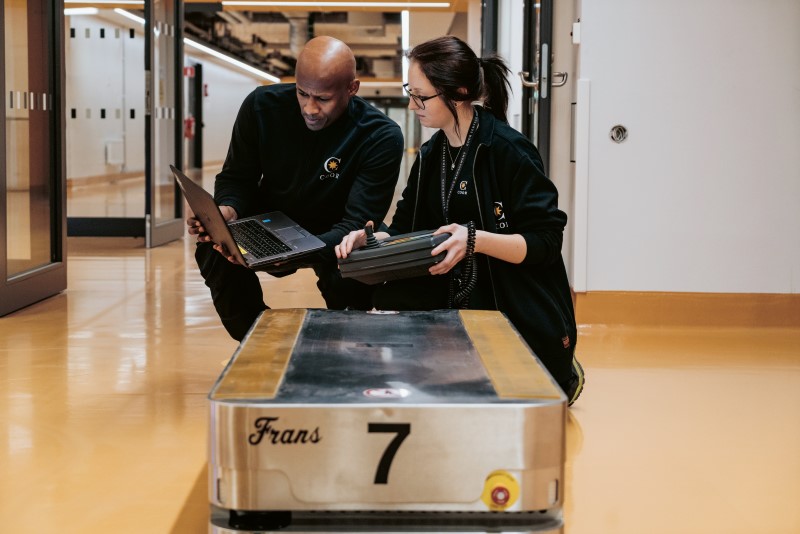
Property by Coor in numbers
1,200
Coor has about 1,200 property technicians on staff.
20 million
Coor maintain some 20 million square meters of building area across the Nordic region.
30%
The Property service area makes up 30 per cent of Coor’s sales.
(December 31, 2022)
Anna Rudberg, Business Unit President, Property at Coor in Sweden, on the key trends that are affecting the property services of tomorrow.
Three key trends affecting property services
The development of new technologies within the property business have been growing rapidly the last couple of years. We see property owners and service providers investing increasingly in sensors, Building Information Modelling (BIM), drones and AI. This sets new requirements and creates new opportunities for property service providers to operate where Coor is a frontrunner partner delivering innovative and smart solutions.
Properties account for almost 40% of energy and process related CO2 emissions. About 70% of these emissions derive from buildings or from the generation of power to the buildings. New technology and more energy efficient solutions combined with an increased availability and usage of data, can significantly reduce the energy consumption from buildings while increasing the performance and wellbeing of the people using them. Based on properties’ high share of CO2 emissions property owners have a key role to play to take action in order to limit global warming to 1,5 degrees, in line with the Paris agreement. With recent increases in energy prices and political instability in the world there are also apparent economic and risk reduction incentives to accelerate the efforts to reduce energy consumption.
To accommodate a higher complexity of property services the Nordic market for outsourced property services has experienced a trend toward partnership-oriented business models. The previous frequency-based maintenance contracts are more often replaced by value-based contract models with focus on up-time of critical assets through predictive and condition-based maintenance approaches, as well as focus on energy savings, user experience and wellbeing.
Coor has spotted three key trends to which we are directing our main service development focus over the coming years: the rise for sustainable property services, the possibilities of digital maintenance and the battle for competence.
Managing and excelling in these trends is crucial to become truly sustainable and support customers' property service and sustainability ambitions. Read more below about Coor’s view and how we address these key trends.


Rise for sustainable property services
The cost for the property maintenance services still remains high up on the agenda, often together with a strong focus on safety. However, multiple factors are forcing organizations to act on the energy topic. Factors such as higher energy prices, uncertain access to energy, sharpened legislation and political instability as well as stricter company policies urge the need to reduce energy consumption and costs. Coor also notices that more and more customers are demanding environmentally sustainable deliveries and that the partners that cannot meet those requirements have an increased fear of missing out on business.
"Studies show a positive correlation between high environmental ratings and sales/rental prices."
Strong upturn for environmental certifications
Coor experiences a strong upturn in the interest for environmental certifications of buildings. These can be seen as quality stamps for the buildings and are also important from reputational and employer branding perspectives as well as for property owners making their companies a desirable green investment. There are also profitable incentives behind these certifications, as studies show a positive correlation between high environmental ratings and sales/rental prices
Upgrading of certifications will be an important driver of investment needs in buildings. The service providers should play a key role in the certification processes, due to their detailed knowledge about the buildings maintained. Strong competence and offerings related to life cycle analysis (LCA) calculations and other measurements will become even more important to guide customers in their investment decisions.
"Building capabilities to reuse and recycle will be key to meet tougher industry and customer demands."
Increased demands of reusing and transparency
The demand of reusing and recycling, both in relation to traditional asset maintenance and in relation to larger renovation and installation projects, increases. We believe that building capabilities to reuse and recycle will be key to meet tougher industry and customer demands.
Furthermore, the customers are expected to be even more interested in the carbon footprint, i.e. greenhouse gas emissions, from their service providers’ operation. Forefront customers in this area are already requesting transparent CO2 accounting of the service providers' operations, including footprint from purchased goods and services. It’s our belief that this kind of accounting soon will be a strict demand for service providers who want to be relevant in future tender processes.
SmartEnergy
With Coor SmartEnergy, you can gather and analyze data to improve the energy efficiency of your facilities.
Why does a building need to become sustainable?
Taking responsibility for sustainability means taking responsibility for your building as well as your employees. Coor talked with Sweden’s first WELL expert, on what it means to make a building green and what type of responsibility businesses must take to make their companies future-proof.

Digital maintenance
Digitalization has not yet reached its full potential in property management. But with increased use of data in combination with AI, BIM and other technologies, we are approaching the paradigm shift many have been waiting for. For the coming years, Coor sees a movement from todays’ mainly pre-defined maintenance models towards condition-based dittos.
Most of the outsourcing contracts of property services are primarily defined in one of two ways: with pre-defined maintenance activities and frequencies or with functional specifications. Successful adoption of any of these two contract models require a proper portfolio strategy and segmentation. Still, many requests for proposals from customers aren’t differentiating the maintenance needs over the entire building portfolio. Instead, they tend to use a “one size fits all” approach for all their buildings, discarding different purposes. For example, it is likely that an industrial production company have separate buildings for office space and production, maybe with future plans to change purpose of use or even to ramp out some buildings.
"This is where sensors and connected devices can bring great value to property maintenance."
Segmentation and differentiation of the building portfolio combined with a thorough asset inventory secure that the maintenance activities are planned to improve the condition of the buildings. This model is better than the “one size fits all” approach, but it still lacks considering the actual condition and performance of the assets. This is where sensors and connected devices can bring great value to property maintenance.
Sensors and AI reveal the actual conditions of the buildings
Today there are sensors to measure energy consumption, sound, vibrations, temperature and other performance data, that can be used to assess the health of equipment and buildings. Combined with AI and machine learning it can help us to predict upcoming failures or breakdowns in advance. We call this digital or predictive maintenance.
Some of the advantages with digital maintenance is the potential for increased up-time, improved performance and reduced consumption.
"BIM improves the access to relevant data and documentation supporting the operation and maintenance of buildings."
Increased usage of BIM in operations and maintenance
Building information modeling (BIM) has been one of the more hyped buzzwords in the property business over the last 10-15 years. It has received strong traction in the construction phase of buildings and now we see that it becomes more common in the maintenance phase as well. Many companies use BIM and digital twins also to improve the access to relevant data and documentation supporting the operation and maintenance of buildings.
Together with a computerized maintenance management system (CMMS) a single point of truth of a building can be created includin its health, its assets and all its documentation. This creates opportunities to monitor the performance of the building and improve the planning and execution of maintenance activities. This enables a value-based maintenance model, that leads to lower operational and maintenance costs. It also improves the transparency of the consumption of for example electricity, gas and water, which will become even more important over the coming years due to soaring energy prices and increased water scarcity.
Smart buildings creates the working methods of the future
Innovative solutions and smart technology can increase the well-being of your people—while simultaneously reducing both environmental impact and energy costs.
Drones with thermal camera revolutionize property maintenance
It can take a long time before thermal or water leaks in a roof are detected. Drones with thermal camera offer a new, revolutionary method of roof inspection.
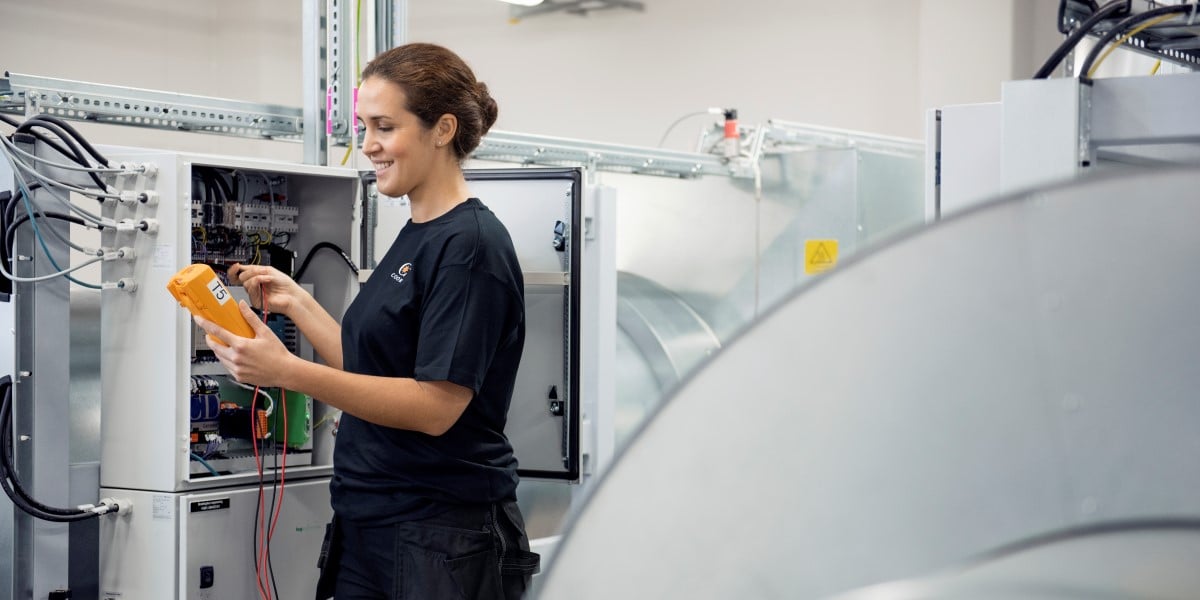
The battle for competence
The biggest and most important struggle for service providers is not to become environmentally sustainable or to incorporate new digitized technologies into their deliveries. It is to find, attract and keep competent employees. The battle for competence is crucial for the service providers in order to be relevant.
Over years, we have experienced a high production rate of new buildings as well as ongoing modernization of existing buildings in the Nordics. To take care of the increased complexity of the buildings and the installed assets we need highly educated people. For years there has been a shortage of property technicians in particular, but also of several other professions related to the property operations and maintenance business. This leads to challenges in finding the right competences and creates a highly competitive market for property owners and service companies to attract, recruit and retain the competence needed.
Technology enables a more resource efficient way of working
To be successful in the labor market, companies need to focus on being an attractive employer, offering good internal career and development opportunities. Organizations will also need to look into how to make the best use of the collective competence they have in their organizations. By using sensors and IoT to a larger extent, companies will enable smarter and more resource efficient ways of working.
We also see that adopting new technology and the benefits that follows will be crucial to manage the existing competence shortage in the market. It will be even more important to map out the knowledge in an organization as technology offers improved ways to interact. Augmented reality (AR) provides the opportunity to use remote expert support. Virtual reality (VR) and mixed reality offers new ways to create training materials and instructions, which can be used to increase safety and develop new skills.
Usage of robots to keep our human employees safe
Over time, as technology matures further and becomes cheaper, it is likely that we also will see more tasks performed by physical robots. Many tasks that are performed by people today are still difficult to replace with robots, but technology advancements are opening up new opportunities. We already see examples like the sensor-equipped dog Spot, developed by Boston Dynamics, that can perform visual inspections, read analog gauges, detect leakages and identify unexpected thermal variations. This type of robots provides significant benefits in dangerous environments where people should not be sent for safety reasons.
No two days are alike for Rebel the Robot
Rebel the Robot is one of Coor's strongest and most tenacious employees. Together with her closest colleagues, she provides up to 100 deliveries per hour at Karolinska University Hospital in Solna, Stockholm.
An extra family in the workplace
Do close friendships make a workplace better? That’s what the guys in the caretaker’s office at Coor Garnisonen say. You can always get help and support here, says Tim Wiberg, who has worked in the group for three years.
We take care of your property!
Visit one of our local sites if you are interested in what Coor can do for you in your country:



